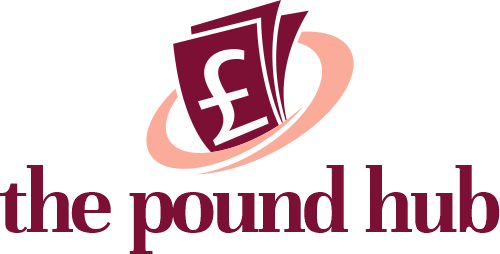Over the past decade, the Middle East has been flooded with captagon. The drug, a mix of amphetamines and caffeine, has become especially popular in Saudi Arabia and the United Arab Emirates, where laborers and partiers use it to stave off hunger and sleep. It has taken both countries by storm—along with the region as a whole. Twenty years ago, almost no one in the Middle East used captagon. Today, it is cheaper and more widely available in the region than alcohol.
Syria makes most of the world’s captagon, which is a crucial source of revenue for the country and its dictator, Bashar al-Assad. The drug is then smuggled into Arab Gulf countries by Iran-linked militias and traffickers from Lebanon and Turkey. But people along smuggling routes, such as in Iraq and Jordan, are also using the drug, as are people in Syria. The trade fuels violence in the Middle East and funds all kinds of nefarious groups.
Governments in the Arab Gulf are struggling to stem the flow of captagon into their countries. They have tried negotiating with Syria to reduce production, and they have executed drug runners and dealers. But their efforts have had little effect. To reduce the use of captagon, Arab countries must partner with Washington to share more intelligence on drug networks, and they need to start treating drug users instead of punishing them. These policies are especially important because the Middle East is on the cusp of developing a far more dangerous drug problem—a methamphetamine crisis.
SAME NAME, DIFFERENT GAME
Captagon was originally developed in the 1960s as a pharmaceutical to treat depression and narcolepsy. By the 1980s, most countries banned the drug because it was addictive and caused serious side effects, including psychosis. A decade later, criminal groups in Bulgaria began making a drug of the same name—although they used a different chemical compound.
The new captagon didn’t take off in Europe, where heroin, cocaine, methamphetamine, and Ecstasy were already widely used. But it did become popular in the Middle East, where the market for illicit drugs was less crowded. Lebanese and Turkish traffickers made the drug in the first decade of this century before production shifted to Syria in 2014. The country’s large chemical industry and sizable cohort of unemployed chemists made it ripe for manufacturing illicit drugs. So did the Syrian civil war, which led much of the country into anarchy. Terrorist groups, including the Islamic State (also known as ISIS) and Jabhat al-Nusra, had taken over much of Syria, and they sold captagon to raise money. Their fighters also consumed it to lower inhibitions, stay awake, and gain a sense of invincibility. “Captain Courage” is a nickname for the drug.
The Assad regime eventually beat back Islamist groups. But rather than stamping out drug production, the government simply took charge. The regime was isolated by sanctions and impoverished by war, and captagon became a vital source of its income and foreign currency holdings. The New Lines Institute, a think tank in Washington, estimated that the Assad regime earned as much as $5.7 billion from selling captagon in 2021, a large stream of income for a country with a total GDP of around $20 billion. Pro-Iranian militias in Lebanon and Iraq also began making money off the trade. Hezbollah, Kataib Hezbollah, and Asaib Ahl al-Haq—all designated by the United States as terrorist groups—smuggle captagon and, because they control much of the government in Iraq and Lebanon, operate with near impunity.
Jordan, Saudi Arabia, and the UAE have tried to suppress the captagon trade. Jordan, for example, has killed dozens of traffickers and has launched airstrikes into Syria targeting drug dealers and their warehouses. Saudi Arabia and the UAE interdict millions of pills each year. The UAE says it seized more than $1 billion worth of captagon in just one bust in September 2023. Saudi Arabia has also threatened to reduce trade with Jordan if Jordan cannot curb drug flows from Syria. But these steps have failed to slow trafficking.
Arab countries have also tried negotiating with the Assad regime to stem the spread of captagon. At the start of Syria’s civil war, in 2011, the League of Arab States expelled Syria, and many Arab governments cut ties with Assad. But when it became clear a decade later that Assad had triumphed, governments in the region began to normalize relations with his government. As part of these talks, Arab states negotiated on captagon. Syria promised to crack down on smuggling (without mentioning captagon in particular) in exchange for rejoining the League of Arab States in 2023. But there is no evidence Syria has reduced production. Drug makers and runners with ties to the government continue to operate with impunity.
BREAKING BAD
Arab states need new strategies to respond to captagon. They can start by retiring their ineffective, punitive policies toward drug users, which fail to reduce drug use. Instead, states need to steer users into treatment. Saudi Arabia, for example, has started to let drug users escape criminal prosecution by submitting themselves to treatment centers that offer medical care and educational, behavioral, and skill-building programs. The Saudi Health Ministry has expanded substance use disorder treatment to 50 hospitals.
Arab countries will also need to adopt better approaches to law enforcement. Police need comprehensive intelligence to apprehend the top players in drug smuggling networks. Yet Middle Eastern law enforcement agencies have trouble communicating with one another because of long-held mistrust. It is difficult, for example, to share information with authorities in Syria because the country’s drug traffickers have such strong ties to the Syrian government and the United States continues to sanction the Assad regime. And pro-Iranian groups control parts of the Iraqi and Lebanese intelligence and law enforcement agencies. But the United States can and should encourage more intelligence sharing on drug networks among Jordan, Saudi Arabia, and the UAE.
The United States can help law enforcement agencies in the Middle East become more effective. Washington is interested in stemming the spread of captagon: in the spring of 2023, for example, the United States, the United Kingdom, and the European Union sanctioned two of Assad’s cousins, Samer Kamal al-Assad and Wassim Badi al-Assad, for trafficking captagon. In December 2022, U.S. President Joe Biden signed into law the Countering Assad’s Proliferation Trafficking and Garnering of Narcotics (CAPTAGON) Act, which requires the United States to develop a strategy to disrupt captagon smuggling networks and build law enforcement partnerships in the Middle East. And the U.S. government has trained the Lebanese and Jordanian authorities to interdict smuggling, forensically analyze drugs, and investigate crimes across borders. But Washington must build on these efforts by sharing more intelligence with Arab states and by helping their authorities work together.
ISIS fighters took captagon to stay awake and gain a sense of invincibility.
Governments in the region must get their act together quickly because there is a risk that captagon will be replaced by a much more devastating drug: methamphetamine. Over time, illicit drug markets evolve toward more potent substances. Since methamphetamine has a higher potency-to-weight ratio than captagon, it is easier to smuggle and more profitable. For example, Southeast Asia had a problem with locally produced yaba, a captagon-like mixture of amphetamine and caffeine, until Chinese criminal networks flooded the region with methamphetamine produced in Myanmar. Yaba users quickly switched. Between 2016 and 2019, meth usage increased eightfold in Vietnam and tenfold in Thailand.
It would not be hard for the Middle East to become a methamphetamine hotbed. Syria could become a major producer of the drug. The country already has skilled chemists and established trafficking networks. And it is just as easy to get the chemicals needed to make methamphetamine as it is to get the ingredients to make captagon. Afghanistan and Iran already produce methamphetamine, although Afghanistan’s product is of lower quality than East Asian or Mexican meth. And Gulf countries are emerging as a hub for Mexican cartels smuggling methamphetamine from Europe to Australia and New Zealand, establishing another readymade channel through which methamphetamine could inundate the region. In a worst-case scenario, Mexican cartels—which have ties to Turkish criminal groups—might partner with the Assad regime, which could provide them with a safe haven from U.S. law enforcement.
Methamphetamine seizures are already increasing in the Middle East and surrounding countries. Turkey, for example, seized 78 tons of methamphetamine in 2022, a twofold increase from the amount seized in 2019. And Jordan seized 45 tons of methamphetamine in the first nine months of 2022—20 times more than during the same period in 2021. Governments in the region must therefore focus on shutting down meth labs wherever they find them and clean up the ports of entry—such as Abu Dhabi and Dubai—through which Australia-bound methamphetamine flows. Arab governments should shut down websites hawking synthetic drugs, driving users onto the Dark Web, where fewer will be able to locate sellers. Otherwise, the Middle East’s drug problems will worsen as users gravitate toward a substance that is deadlier and more addictive than captagon.
Loading…







